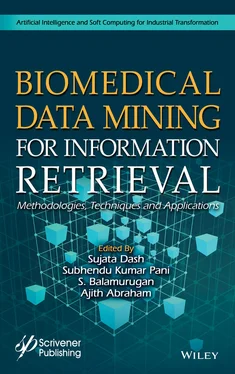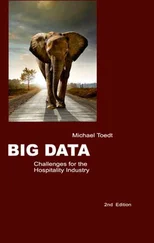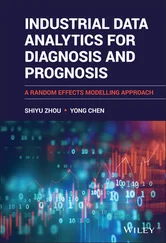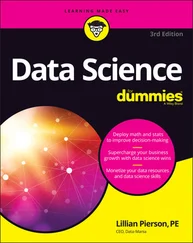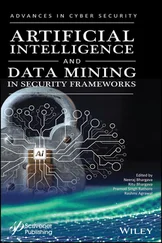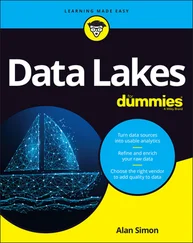1 ...7 8 9 11 12 13 ...20 22. Hamilton, S.L. and Hamilton, J.R., Predicting In-Hospital-Death and Mortality Percentage using Logistic Regression. Computing in Cardiology Conference (CinC) , vol. 39, IEEE, pp. 489–492, 2012.
23. Bera, D. and Manjnath Nayak, M., Mortality Risk for ICU patients using Logistic Regression. Computing in Cardiology Conference (CinC) , vol. 39, IEEE, pp. 493–496, 2012.
24. Xu, J., Li, D., Zhang, Y., Djulovic, A., Li, Y., Zeng, Y., CinC Challenge: Cluster Analysis of Multi-Granular Time-series Data for Mortality Rate Prediction. Computing in Cardiology Conference (CinC) , vol. 39, IEEE, pp. 497–500, 2012.
25. Monterio, F., Meloni, F., Baranauskas, J.A., Alaniz Macedo, A., Prediction of mortality in Intensive Care Units: A multivariate feature selection. J. Biomed. Inf., Elsevier , 107, 103456, pp. 1–11, 2020.
26. Johnson, A.E.W., Real-time mortality prediction in Intensive Care Unit. AMIA Annual Symposium Proceedings Archive , pp. 994–1003, 2018.
27. Awad, A., Bader-EI-Den, M., McNicholas, J., Briggs, J., EI-Sonbaty, Y., Predicting hospital mortality for intensive care unit patients: Time series analysis. Health Inf. J. , vol. 26(2), pp. 1043–1059, 2019.
28. Garcia-Gallo, J.E., Fonseca-Ruiz, N.J., Celi, L.A., Duitama-Munoz, J.F., A machine learning-based model for 1-year mortality prediction in patients admitted to an Intensive Care Unit with a diagnosis of sepsis. Med. Intensiva , Elsevier, 44, 3, 160–170, 2018.
29. Caicedo-Torres, W. and Gutierrez, J., ISeeU: Visually Interpretable deep learning for mortality prediction inside the ICU. J. Biomed. Inform., Elsevier , 98, 103269, pp. 1–16, 2019.
30. Ma, X., Si, Y., Wang, Z., Wang, Y., Length of stay prediction for ICU patients using individualized single classification algorithm. Comput. Methods Programs Biomed. , 186, 105224, p. 1–11, 2020.
31. Schönrock-Adema, J., Heijne-Penninga, M., van Hell, E.A., Cohen-Schotanus, J., Necessary steps in factor analysis: Enhancing validation studies of educational instruments. The PHEEM applied to clerks as an example. Med. Teach. , 31, 6, e226–e232, 2009.
32. Majhi, R., Panda, G., Sahoo, G., Development and performance evaluation of FLANN based model for forecasting of stock markets. Expert Syst. Appl., Elsevier , 36, 3, 6800–6808, 2009.
33. Widrow, B., Adaptive signal processing , Prentice Hall, New Jersey, 1985.
34. https://ncss-wpengine.netdna-ssl.com/wp-content/themes/ncss/pdf/Procedures/NCSS/Discriminant_Analysis.pdf
35. Han, J., Kamber, M., Pei, J., Data mining concepts and techniques , Third Edition, Elsevier, India, 2012.
1 *Corresponding author: babita.majhi@gmail.com
2
Artificial Intelligence in Bioinformatics
V. Samuel Raj, Anjali Priyadarshini*, Manoj Kumar Yadav, Ramendra Pati Pandey, Archana Gupta and Arpana Vibhuti
SRM University, Delhi-NCR, Rajiv Gandhi Education City, Sonepat, India
Abstract
Artificial intelligence tries to replace human intelligence with machine intelligence to solve diverse biological problems. Recent developments in Artificial Intelligence (AI) are set to play a very essential role in the bioinformatics domain. Machine learning and deep learning, the emerging fields with respect to biological science have created a lot of excitement as research communities want to harness their robustness in the field of biomedical and health-informatics. In this book chapter, we will look at the recently introduced state of the art in the field of Bioinformatics using complex Artificial Intelligence algorithms. With various intelligent methods available, the most common problem is selection of the best method to be applied for any specific data set. Researchers need tools, which present the data in a comprehensible fashion, annotated with context, estimates of accuracy and explanation. Thus the various smart tools available and their advantages and disadvantages have been the major focus of this chapter.
Keywords:AI, bioinformatics, protein prediction, drug discovery, gene sequence, deep learning in bioinformatics, gene expression
Computational biology is contributing to some of the most important bioinformatics advances helping in the field of medicine and biology. This field is expanding and enhancing our knowledge with the help of tools of artificial intelligence which are inspired by the way in which nature solves the problems it faces. This chapter deals with biology, bioinformatics and the complexities of search and optimisation which would equip the reader with the necessary knowledge to undertake a biological problem with the aid of computational tools. This chapter also contains links to software and information available on the internet, in academic journals and beyond, making it an indispensable reference all natural scientists and bioinformatics person having large data sets to analyze.
We are aware of the fact that one medicine for all is not valid anymore due to genetic variations arising in different ethnic population or due to mutations. It becomes pertinent to develop personalized medicine and Artificial intelligence (AI) which is referred to as the core of the fourth revolution of science and technology would be able to provide an opportunity to achieve this for precision public health [1, 2]. This can be done by fact that medical AI generates an all-round promotion of medical services which includes accurate image interpretation, enabling fast data processing, improving workflow, and reducing medical errors in the healthcare system [3]. Due to improved medical facilities worldwide geriatric population has increased. Advancing age is associated with multiple ailments which compromises the quality of life and tend to have a high morbidity of chronic diseases [4, 5]. Therefore elderly people have a higher demand for AI because their demand for medical service increases and a more rapid, accessible, and cost-efficient medical model need is prevalent. Medical services with AI assistance Various AI-aided services such as AI mobile platforms for monitoring medication adherence, early intelligent detection of health issues, and medical interventions among home-dwelling patients [6, 7] have the potential to meet such needs.
2.2 Recent Trends in the Field of AI in Bioinformatics
The basic conception of machine learning as an important element of the continued huge information revolution is reworking biomedicine and care. One of the foremost thriving sorts of machine learning techniques is Deep Learning, which has re-modeled several subfields of AI over the last decade. Deoxyribonucleic acid sequencing has furnished researchers the strength to “study” the genetic blueprint that directs all happenings of a living organism. The reference of significant Dogma of life: the pathway from deoxyribonucleic acid to macromolecule via polymer, is that the epitome of series goes with the flow. DNA, the composition of base pairs, supported four elementary units known as nucleotides (A, T, G and C) whereby A pairs with T with double element bonds and G pairs with C through triple element bonds. The deoxyribonucleic acid is condensed into Chromosomes. The chromosomes area unit is shaped from the segments of deoxyribonucleic acid known as genes that create or write in code proteins. This active deoxyribonucleic acid is that the key space of cognizance in analysis and therefore the business of genetics. Genetics is closely related to exactitude medicinal drugs. The sphere of exactitude medicine, conjointly called customized medicine, is an associate method to affected person care that encompasses biology, behavior, and environment with a vision of enforcing an affected person or populace-precise treatment intervention; in distinction to a one-length-fits-all technique. For example, the blood sorts area unit matched beforehand to scale back the danger of complications.
Читать дальше
